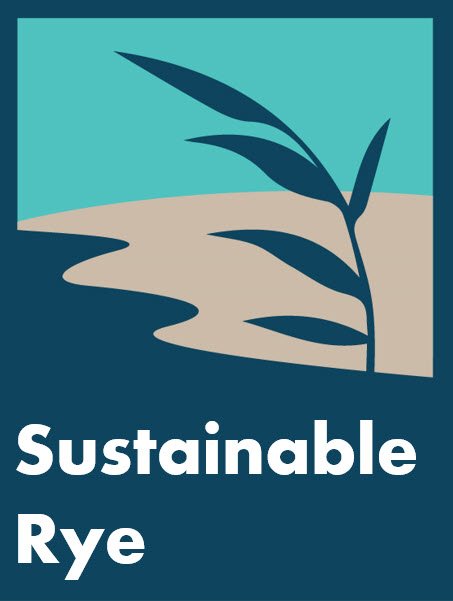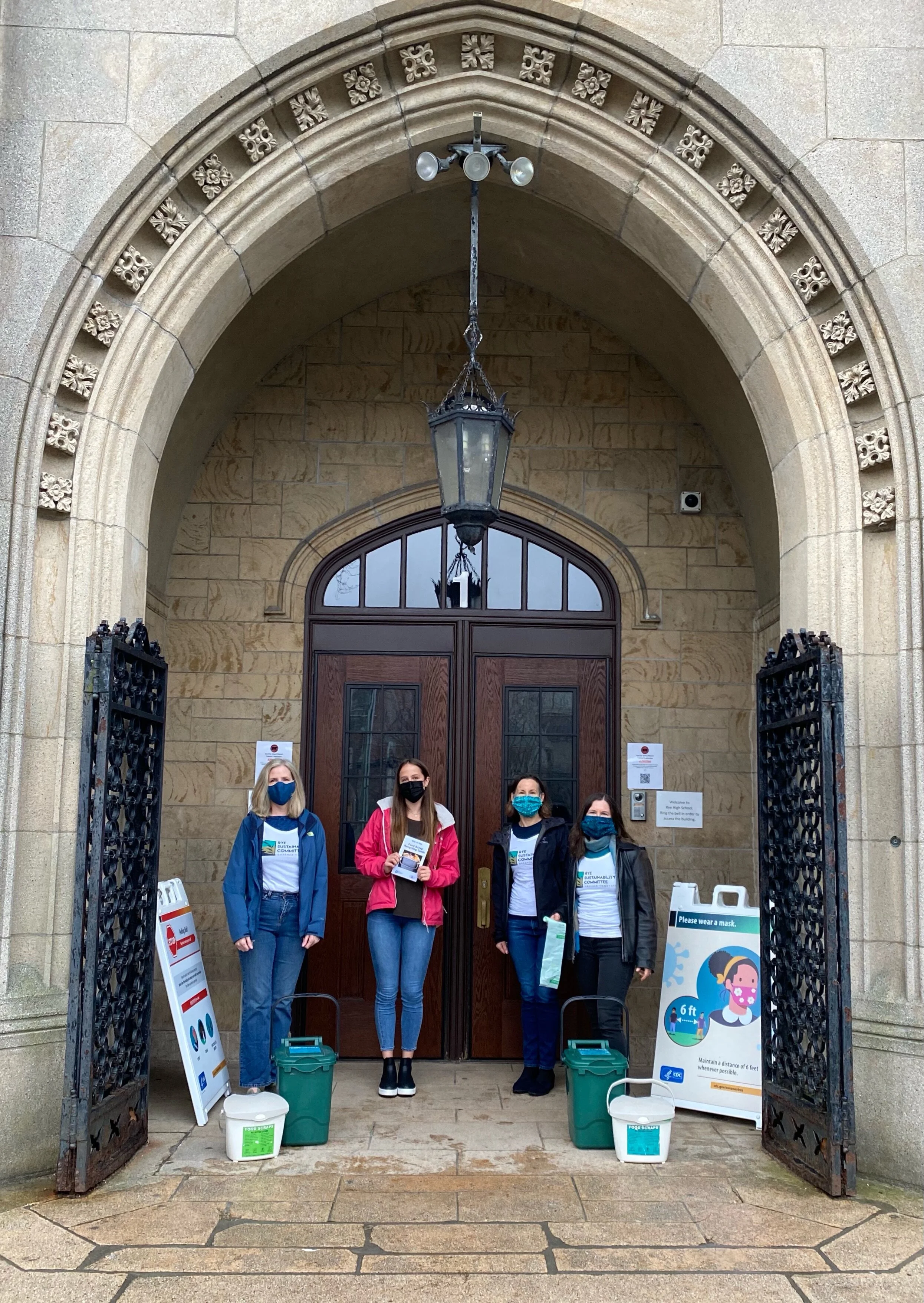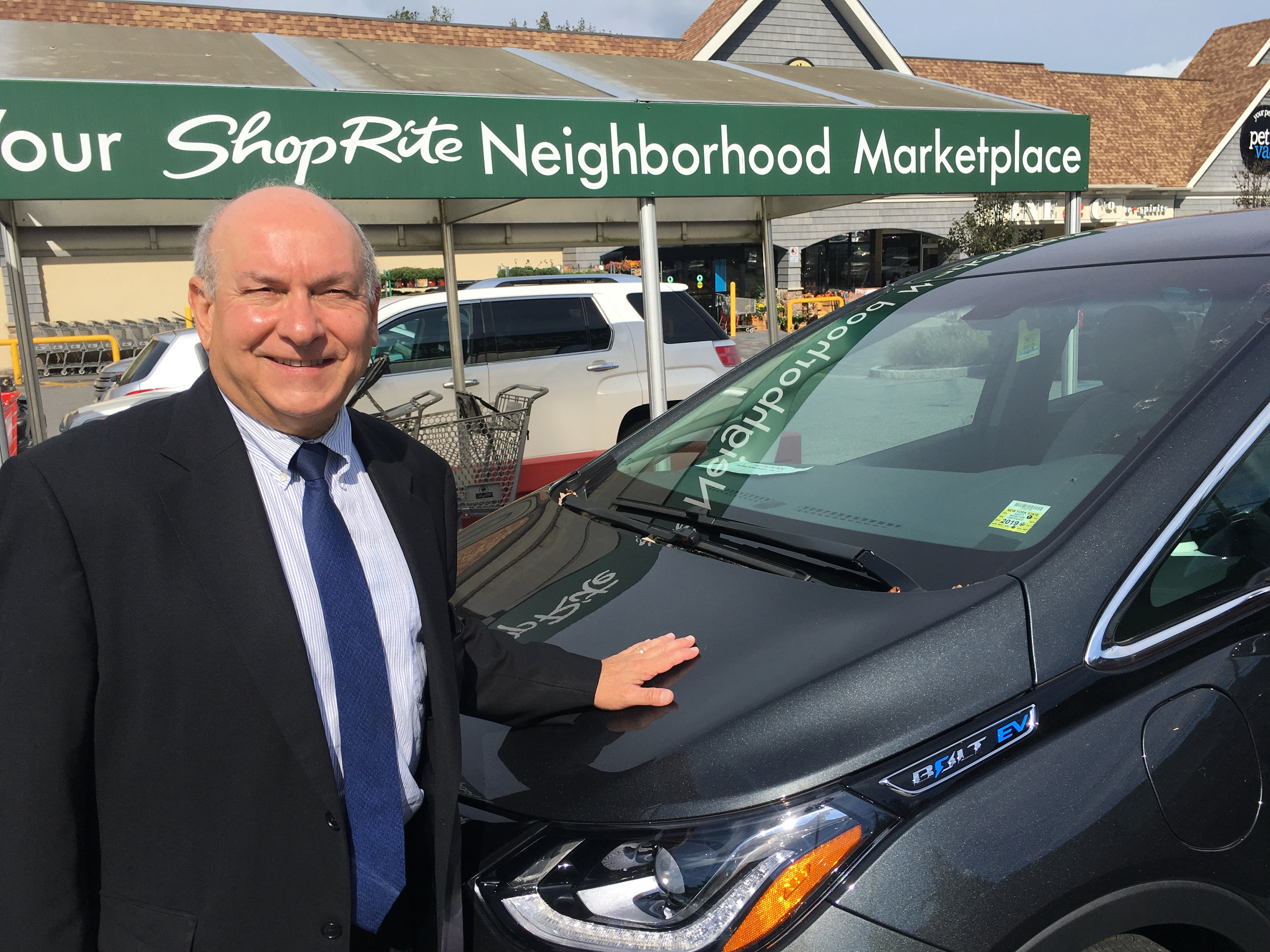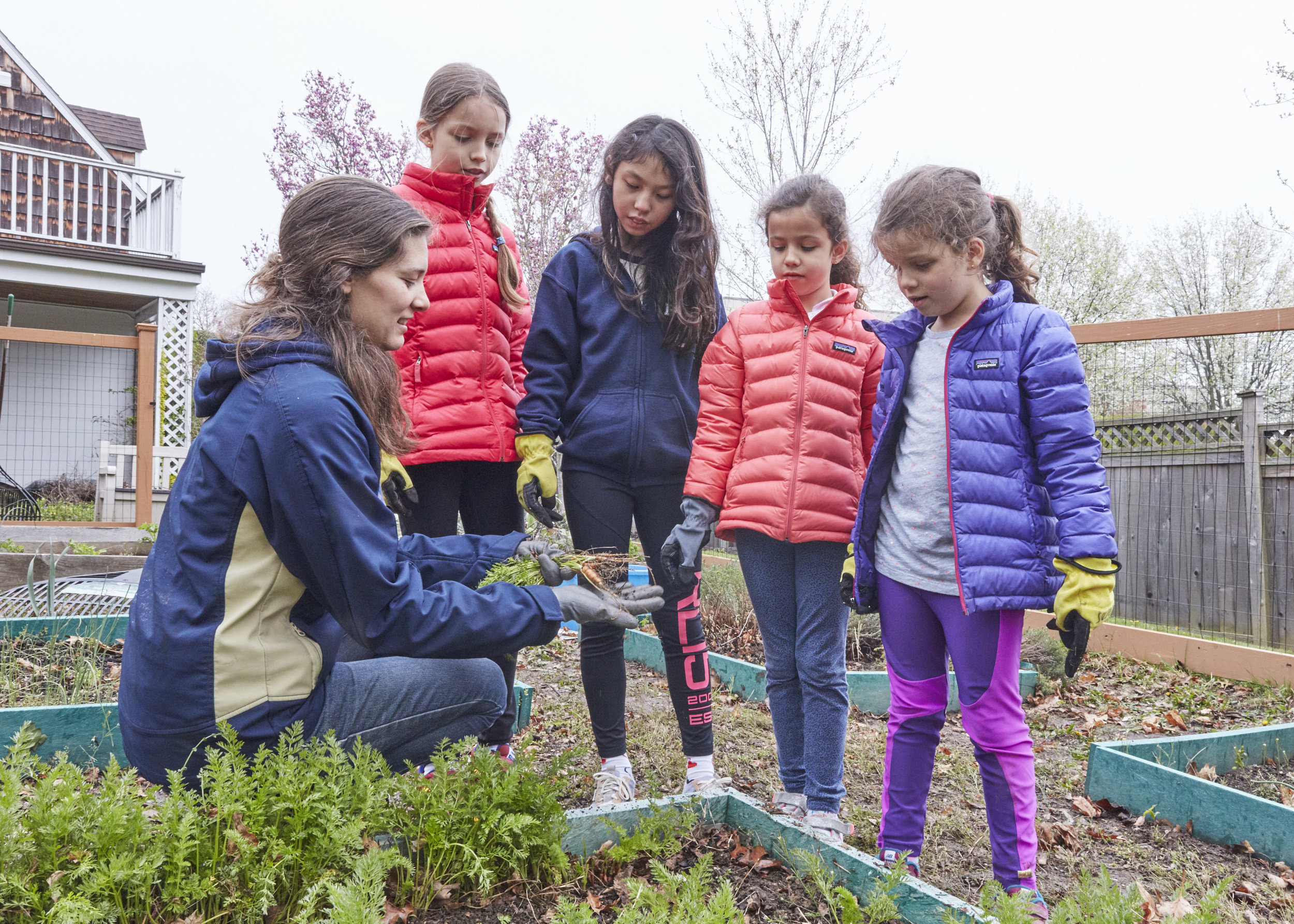With the New Year upon us and the possibility of a fresh start, consider a Green New Year’s resolution or two for 2019. To help you get started, here are a few ideas from some of the area’s local environmental and sustainability leaders.
And if you’re still looking for inspiration, check out Rye Sustainability Committee members’ own New Year’s Resolutions!
Andrea Alban-Davies
Conservation Chair, Rye Garden Club
A typical lunch for Andrea’s children
Reuse it. Pack a waste-free lunch for yourself and/or your kids. To include in your (reusable!) lunch bag: reusable water bottle, reusable metal food containers, reusable cloth (or other) sandwich bags, silverware, and a cloth napkin.
Chris Burdick
Town Supervisor, Bedford & Founding Chair, Sustainable Westchester
Chris with his Electric Vehicle, the Chevy Bolt
Keep that car. Consider whether you can hang onto your car a bit longer. Maintaining your car as long as you can is the most cost efficient use of your automobile dollars and the fewer cars you buy, the less goes into the waste stream.
Staying cool. Consider turning down your air conditioning next summer. Try fans.
Liz Garrett
Organic landscape designer & former Chair, RSC Rye Healthy Yard Program
Leaves. Think of three ways you can use leaves in your own yard to feed the earth; be it the brown in your home composting recipe, shredding them and blowing them into a shrub (or arborvitae) border to blanket the shrubs and beds, or making sure your landscape company mulches the leaves in place on your lawn next fall. January is the time to discuss this with your landscape contractor or find a new one who can. [Need a new landscaper? Visit RSC’s Landscape Directory for suggestions.]
Pesticides. Remove at least one pesticide from your arsenal. Are you using chemicals to get rid of weeds in the patio or driveway? Hand pull them instead. Does your lawn care service apply some blanket herbicide as weed control? Try mulch-mowing or over-seeding in the fall to combat weeds that thrive in poor soils. Are you quick to grab a fungicide or pesticide if you see disease or an infestation on your prized ornamentals? Try an organic systemic soil additive or biologic control instead. The recent NY Times article on “The Insect Apocalypse” is a sobering read.
Go native. In that vein, if you are adding to your yard, add natives or other beneficial plants and shrubs that will provide pollen and sustenance for native caterpillars and insects. The birds and larger bugs will appreciate it.
Anne Jaffe-Holmes
Executive Director, Federated Conservationists of Westchester County
Anne’s 2019 Resolutions:
Get OUT OF MY CAR!!! I'm good about walking when I can, but I am pushing myself - already in December! - to ride my bike to the store, take the bus to work, and get on the train to meet people in another village or town! It requires being more organized so that I give myself enough time to bike, or to be at the bus stop or train station on time. The extra exercise is a major benefit, and being able to read on the bus or train feels like almost like a chocolate reward! The challenge is the discipline of getting out early on my bike, or being on-time for the bus or train I need to take!
Do I really NEED to buy this? In the interest of reducing the waste, the clutter, the maintenance that come with owning "things", in 2019 I am excited about slowing down my purchasing. I want to consider more carefully whether I really need to buy something, or whether if I dig through my closet I will find the item I need, or whether I can borrow it from a friend - or maybe even do without it!!! And if I DO decide I need to buy, I am excited about exploring whether I can buy it second-hand!
Kerry Linderoth
Director of Sustainability & AP Environmental Science Teacher, Rye Country Day School
I will continue striving towards a zero waste lifestyle - both at school and at home! I don't have a trash can in my office, which serves as a conversation starter and educational opportunity about the growing problem with waste in our society. The average American generates 4.4lbs of trash per day, but that number can be greatly reduced by recycling, composting, and reducing unnecessary packaging.
Kerry reports that she also asks her AP Environmental Science students to write out their own green New Year’s resolutions. A good idea to get young minds thinking green!
Peter McCartt
Director of Energy Conservation and Sustainability, Office of the Westchester County Executive
I, Peter McCartt, resolve to:
Peter has made the Green Westchester Pledge. Have you?
Complete the update of the Climate Action Plan through the newly established Climate Crisis Task Force;
Complete the Demand Response Program that eliminates the chance of brown-outs and black-outs and the subsequent need for more expensive infrastructure repairs and upgrades;
Complete the 2 MW Solar System on the Yonkers Bus Depot and start the solar projects on County properties and facilities totaling 4 MW;
Further electrify County and municipal fleets and expand EV charging infrastructure, creating a network of stations across the county;
Plan the construction of our County-wide food scrap recycling program;
Complete the installation of 30,000 LED bulbs across multiple County properties.
Nina Orville
Founder, Abundant Energy
Nina’s resolutions for 2019:
Raise awareness. Talk more directly about the implications of climate change for our future well-being. Our reluctance to discuss it makes it easier for us to carry on as if this unprecedented challenge was not disrupting the miraculous natural processes and systems that sustain us. When we connect what science tells us about future conditions with the implications of those conditions for our children and all that we love, it spurs action and resolve.
Reduce, reduce, reduce. Reduce use of plastics in all forms and to recycle all plastics that are recyclable (including bringing recyclable bags and plastics film to the grocery store for recycling).
Convert to LED. I've already done this one but it's timely for many people: Converting your interior and exterior lights to LED. Look for "warm white" designation to replace any incandescent bulbs. LEDs save about 75% in energy usage and will last for many years.
Ron Schulhoff & Michelle Sterling
Scarsdale Conservation Advisory Council
The FSR Dynamic Duo’s resolutions:
Number 1, by far: Purchase a food scrap recycling kit and start using it!
Grasscycle. It’s so easy for your landscaper to do, requires no extra equipment, and has a significant environmental impact!
Mulch mow your leaves
Switch to an organic landscaping program. Get those little yellow poison signs off your law for good!
Use a Green Garmento bag for dry cleaning, and always save and return your hangers to the dry cleaner!
Christine Siller
Executive Director, Rye Nature Center
Don’t let the winter cold make you idle! Turn off that engine.
Once a week, buy nothing.
Christine suggests taking a look at Rye Nature Center’s Green Tips as well.
Annie Teillon
Chair, Apawamis Club Green Team
My dream for 2019 is to help foster an understanding that going green is not just for the younger set. Our efforts to protect Mama Earth affect today's environment, economy and our overall health. I am working with members of The Apawamis Club Green Team to pinpoint areas that can easily go green without making a huge lifestyle impact to members. Our initial goals are to reduce the single use plastics such as straws and cups club wide and find alternatives to the coolers full of single use water bottles on the golf course. Waste reduction must span generations so that we can learn from and teach one another. Recycling is integral to regaining a balance of the environmental intricacies of our planet, but not using plastics in the first place beats all!




















